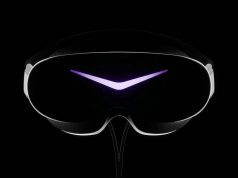With the exciting new developer features revealed with the Oculus SDK 0.6 earlier this month, it’s great to see Epic working diligently to bring the new version to Unreal Engine 4. The first integration of 0.6 for UE4 comes in version 4.8 Preview 3 which developers can experiment with now.
Oculus’ new 0.6 SDK is a significant revamping of the company’s software component which allows developers to build applications that work correctly with the Rift VR headset. New features are largely targeted at improving tracking performance and giving developers tools to better optimize their software.
See Also: Visualizing the Latest Features Found in Oculus SDK v0.6.0.0
Epic tells us that they’ve now integrated the 0.6 SDK into Unreal Engine 4 as of version 4.8 Preview 3, which is available now via the Launcher or as source through the UE4 GitHub.
Developers working at the code level in 4.8 Preview 3 can begin experimenting with the new SDK, says J.J. Hoesing, Senior Engine Programmer on Epic’s VR Team. However, those working further from the code will have to wait for Oculus SDK 0.6 features to be exposed in the UE4 Editor. Not all new features from SDK 0.6 are integrated just yet, but as of Preview 3 the engine is now compliant with the new SDK, says Hoesing.
Developers who want to start working right away with the latest Oculus SDK features can make use of the Oculus-provided ‘Unreal Engine 4 Integration’, but those who want to make sure their UE4 VR project works from one engine update to the next should stick with Epic’s official integration, says Nick Whiting, lead programmer on VR and visual scripting for UE4.
“The version [of the Oculus SDK we build into UE4] is the ‘approved’ version that we guarantee to work with the engine, and has been vetted by our QA,” Whiting tells me. “The Oculus provided integration is for those who want features on the bleeding edge, but may run the risk of being refactored or changed by the time they hit the engine mainline. If people are willing to run that risk, understanding that some changes might not make it into the mainline engine, they’re certainly free to use the Oculus integration! However, for stability, we recommend people use our provided integration, which comes from the Oculus integration, but goes through Epic’s quality control, and we make sure it adheres to our engine standards.”
See Also: Epic’s ‘Showdown’ Demo Runs at 60 FPS on Morpheus After UE4 Optimizations
Unreal Engine 4.8 is also bringing with it the first wave of support for SteamVR / HTC Vive and the latest Sony Morpheus SDK with support for the 2015 prototype and 120Hz ‘reprojection’ function.










